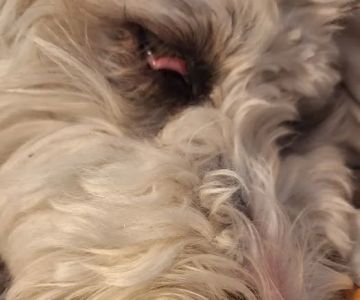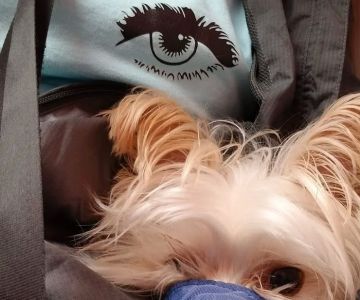How to Train a Dog to Stop Chasing Small Animals
As a dog owner, one of the most frustrating behaviors I had to address was my dog’s instinct to chase small animals. Whether it was squirrels, rabbits, or even cats, the sudden urge to give chase could make walks and outdoor adventures a stressful experience. If you find yourself in a similar situation, rest assured that you're not alone. In this article, I’ll share what I learned and the methods I used to successfully train my dog to stop chasing small animals, and how you can do the same for your furry friend.
1. Understanding the Root Cause of Chasing Behavior
Before I started training my dog, I realized that understanding why dogs chase small animals was key. The behavior is often driven by their prey drive, a natural instinct inherited from their ancestors. Dogs are wired to chase moving objects, especially those that resemble prey. My dog, like many others, would react to the sight of a squirrel darting across the yard with an immediate burst of energy. I needed to redirect this energy in a positive way, rather than suppressing it altogether.
1.1 Why Some Dogs Have Stronger Prey Drives
Some breeds, like terriers, sight hounds, and herding dogs, have a particularly strong prey drive. If you have one of these breeds, it's especially important to understand this behavior. I noticed that my dog, a mix of terrier and hound, had a very high prey drive, making it more challenging to control his impulses. However, with consistent training and patience, I was able to make significant progress. Understanding the breed’s natural instincts allowed me to tailor the training to his needs.
2. Leash Training for Immediate Control
One of the first steps I took to curb the chasing behavior was leash training. I started by taking my dog on daily walks with a leash, making sure to maintain full control at all times. Whenever I saw a small animal, I immediately redirected his attention away from it. If my dog started to lunge or pull, I gently corrected him by using a firm but calm voice. I didn’t want to discourage his excitement entirely, but I needed him to learn to focus on me rather than the animals around us.
2.1 Using Positive Reinforcement
Positive reinforcement played a huge role in my training strategy. When my dog successfully ignored a small animal and kept walking with me, I would reward him with treats and praise. This way, he began to associate the presence of small animals with positive rewards for good behavior. Over time, this helped him learn that staying calm and focused on me was more rewarding than chasing after the creatures in the park.
3. The "Leave It" Command
Another essential training tool I found helpful was teaching my dog the “leave it” command. This command is crucial for stopping your dog from engaging in unwanted behaviors, such as chasing small animals. To teach this, I started by showing my dog a treat in my hand. When he tried to get the treat, I said “leave it” and closed my hand around the treat. After a few repetitions, he began to understand that “leave it” meant “don’t engage.”
3.1 Practicing “Leave It” in Controlled Environments
I didn’t start practicing “leave it” with real animals right away. Instead, I began with controlled environments, using toys and treats. I’d place a toy or treat on the floor and give the command “leave it.” When he looked away or showed restraint, I rewarded him with praise and treats. Gradually, I introduced distractions, like a squirrel on the other side of the yard. With practice, my dog started associating the command with all forms of distractions, including small animals.
4. Consistent Exercise and Mental Stimulation
One of the biggest realizations I had during my training journey was the importance of consistent exercise and mental stimulation. Dogs who are bored or under-exercised are more likely to chase after animals as an outlet for pent-up energy. I made sure that my dog received plenty of exercise through daily walks, playtime, and even puzzle toys that challenged his mind. This not only helped burn off excess energy but also kept his mind engaged and less focused on chasing small animals.
4.1 Structured Playtime
Structured playtime is another great way to prevent unwanted chasing behavior. I introduced games like fetch and tug-of-war, which allowed my dog to engage in activities that provided mental and physical stimulation. I found that a dog who was mentally stimulated and physically tired was much less likely to react impulsively to small animals in the yard.
5. Gradual Exposure to Small Animals
While leash training, “leave it” commands, and mental stimulation were effective, I also incorporated gradual exposure to small animals to help desensitize my dog to their presence. I started by allowing him to observe animals from a distance while on a leash. I kept the encounters short and positive, rewarding him for staying calm and focused on me. Over time, I gradually decreased the distance between him and the animals, ensuring that I maintained control and rewarded him for good behavior.
5.1 Using Other Dogs as Role Models
One technique that worked particularly well for me was using other dogs as role models. If I saw another well-trained dog that was calm around small animals, I’d ask the owner if my dog could observe them. Watching another dog successfully ignore a squirrel or rabbit taught my dog that he could do the same. This social learning helped reinforce the behavior I wanted to see in my dog.
6. Patience and Persistence
Training your dog to stop chasing small animals is not something that happens overnight. It takes patience, consistency, and persistence. There were times when I felt frustrated, especially when my dog would lunge or show excitement around animals. However, I reminded myself that behavioral changes take time, and with each successful training session, we were getting closer to our goal. I kept my training sessions short, positive, and consistent, which made a big difference in my dog’s progress.
6.1 Seeking Professional Help
If you find that your dog’s chasing behavior is too difficult to manage on your own, consider seeking the help of a professional dog trainer. A professional can help assess the situation, provide personalized advice, and offer advanced training techniques to address the issue. In my case, I consulted with a trainer for a few sessions, which helped accelerate my dog’s progress and gave me additional tools to use at home.











